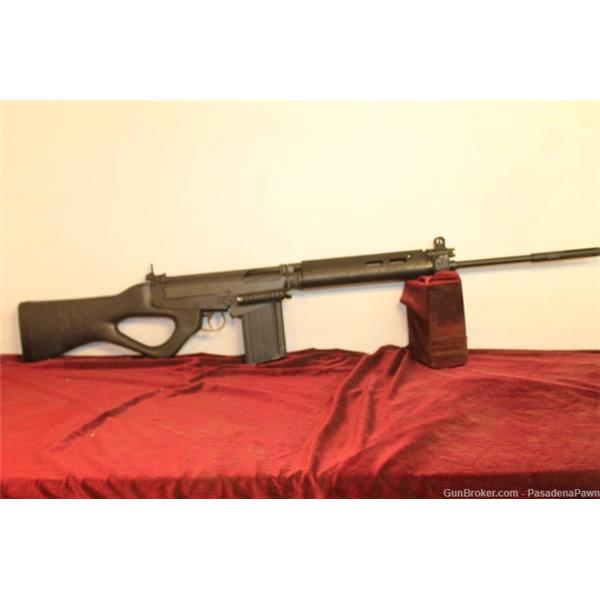

In fully-automatic mode, however, the shooter receives considerable abuse from recoil, and the weapon climbs off-target quickly. This is due mainly to the rifle's weight, but also to its gas-operated design. 30 cartridge, the FAL's recoil is relatively light. Most heavy barreled FALs are equipped with bipods, although some light barrel models were equipped with bipods.ĭespite using a full-power. In fixed stock versions of the FAL, the recoil spring is housed in the stock, while in folding-stock versions it is housed in the receiver cover, necessitating a slightly different receiver cover, recoil spring, and bolt carrier.įAL rifles have also been manufactured in both light and heavy-barrel configurations, the heavy barrel intended for automatic fire. The FAL's magazine capacity ranges from 5 to 30 rounds, with most magazines holding 20 rounds. The gas system is fitted with a gas regulator behind the front sight base, allowing adjustment of the gas system in response to environmental conditions, and can be closed completely to allow for the firing of rifle grenades.
#Century arms l1a1 inch pattern price series#
To lock, it drops down into a solid shoulder of metal in the heavy receiver like the bolts of the Russian SKS carbine and French MAS-49 series of semi-automatic rifles. The gas system is driven by a short-stroke, spring-loaded piston housed above the barrel, and the locking mechanism is what is known as a tilting breechblock. The FAL operates by means of a gas-operated action very similar to that of the Russian SVT-40. In the West, FAL's primary competitor was the German Heckler & Koch G3. Unlike the Russian AK-47 assault rifle, the FAL utilized a heavier full-power rifle cartridge. A few, such as Israel and South Africa, manufactured and issued both designs at various times.

#Century arms l1a1 inch pattern price free#
Formally introduced by its designers Dieudonne Saive and Ernest Vervier in 1951, and produced two years later, it has been described as the "right arm of the Free World." The FAL battle rifle has its Warsaw Pact counterpart in the AK-47, each being fielded by dozens of countries and produced in many of them. However, in the mean time, most other NATO countries were evaluating and selecting the FAL.įN created what is possibly the classic post-war battle rifle. Eventually, the T44 won out, becoming the M14. 30 Light Rifle went up against the redesigned T25 (now redesignated as the T47), and an M1 Garand variant, the T44. 30 Light Rifle cartridge was in fact later standardized as the 7.62 mm NATO however, the U.S. acceptance of the FN FAL as NATO standard. 30 Light Rifle cartridge as NATO standard in return for U.S. President Harry Truman in 1952 that the British accept the. It is believed that there was a quid-pro-quo agreement between Churchill and U.S. This decision was later rescinded after the Labour Party was ousted from control of Parliament and Winston Churchill returned as Prime Minister. 280 British cartridge in the very same month. This decision appeared to be correct when the British unilaterally decided to adopt the EM-2 and. that they could produce the FAL royalty-free in the U.S. In 1951, FN even made a deal with the U.S. FN decided to hedge their bets and cast their lot with the U.S., given that the UK appeared to be favoring their own EM-2. Army officials suggested that FN should redesign their rifle to fire the U.S. It was hoped that a common cartridge and rifle could be standardized for issue to the armies of all NATO member countries. 280 British calibre, to the United States for comparison testing against the favored United States Army design of the time - Earle Harvey's T25. In 1950, the United Kingdom presented the redesigned FN rifle and the British EM-2, both in. After evaluating the single bullpup prototype, FN decided to return instead to their original, conventional design for future production. 280 British calibre intermediate cartridge. After testing this prototype in 1948, the British Army urged FN to build additional prototypes, including one in bullpup configuration, chambered for their new. It was designed to fire the intermediate 7.92x33mm Kurz cartridge developed and used by the forces of Nazi Germany during World War II (see StG44 assault rifle). In 1947, the first FN FAL prototype was completed.


 0 kommentar(er)
0 kommentar(er)
